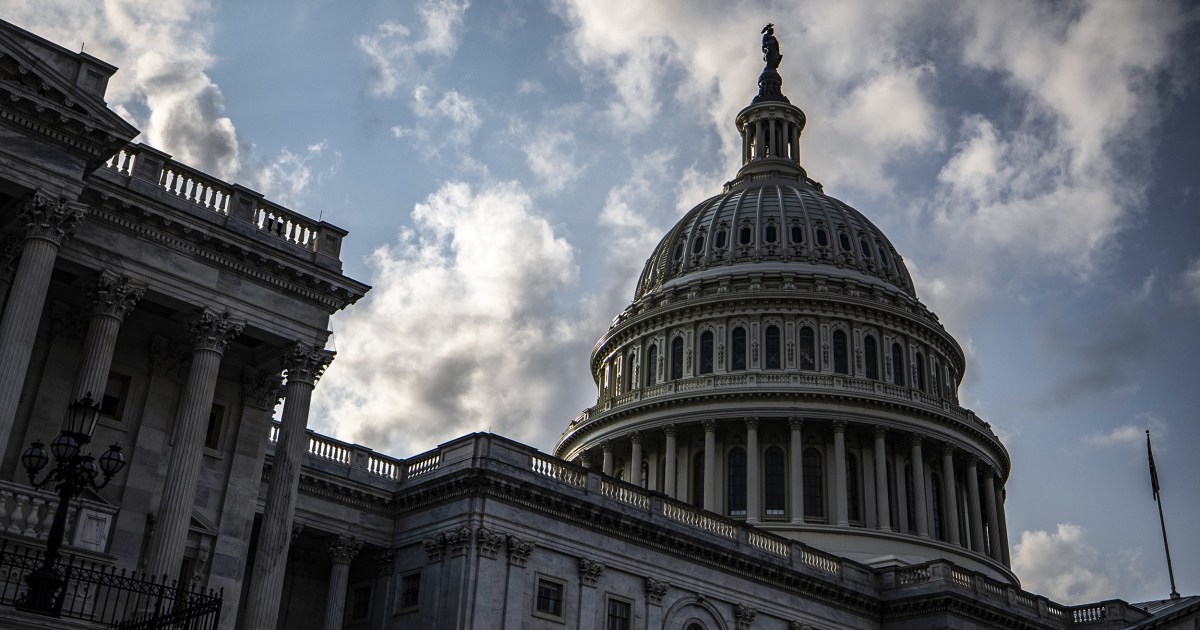
A political standoff over raising the debt ceiling — again — hangs over an increasingly cloudy market outlook, prompting economists to warn that taxpayers could be the ones to pay the price for politicians’ intransigence.
Treasury Secretary Janet Yellen said that since the debt ceiling was reinstated last month, the department has been undertaking “extraordinary measures” to keep its ability to finance the government intact. “Once all available measures and cash on hand are fully exhausted, the United States of America would be unable to meet its obligations for the first time in our history,” she said in a letter to chamber and committee leaders last week, estimating that this fiscal D-Day could come in mid-October.
A fiscal D-Day could come as soon as mid-October, Yellen warned.
Playing chicken with U.S. sovereign debt could incur staggering costs, said Mark Zandi, chief economist at Moody’s Analytics.
“Treasury yields are the so-called risk-free interest rates for a reason… If there’s any sense that the Treasury won’t pay on time, it shakes the confidence of global investors. Interest rates are going to spike, the stock market is going to plunge,” he said, adding that future generations of Americans would ultimately bear the cost. “The problem is, forevermore, investors are going to demand a higher interest rate, so it’s going to cost us enormously,” he said.
The debt ceiling is a perennial political football in Washington, but market observers say the stakes are higher this time around, as brinkmanship over raising the nation’s borrowing limit becomes conflated with Democrats’ plans to raise taxes and roll out a significant expansion of the social safety net without Republican support. GOP leaders have said that since Congressional Democrats plan to use the budget reconciliation process to advance President Joe Biden’s agenda along party lines, they should raise the debt ceiling the same way.
“This is a talking point the Republicans can use to push back” against some of the Democrats’ spending plans, said Joseph LaVorgna, managing director and chief economist of the Americas at Natixis. He pointed out that the market has already been spooked by rising inflation, which he said could spiral out of control if trillions more of fiscal stimulus in the form of infrastructure and “human infrastructure” investment is injected into an economy already struggling with shortages and bottlenecks of both materials and labor.
“This will meaningfully increase inflation risk and that will have negative implications for interest rates and financial markets,” LaVorgna said.
Critics of the Republicans’ argument point out that the debt ceiling doesn’t authorize new spending — the squabbling is over whether to pay for what the government has already spent. Democrats have accused Republicans of hypocrisy, because during President Donald Trump’s term, legislators repeatedly raised the debt ceiling with bipartisan consensus. In 2017, they raised it by $1.7 trillion in 2017, and by $2.2 trillion just two years later.
“The debt limit was breached the moment the Republicans voted for the CARES Act back in March of 2020,” Zandi said. “Republicans voted for this, and now they’re not willing to sign on” to pay for the expenditures they authorized, he said.
With both sides digging into their respective corners, Yellen stressed that both parties had a role to play in the current fight. “Congress has addressed the debt limit in recent years through regular order, with broad bipartisan support,” she said.
But in a bitterly divided Washington, any common ground can be elusive. “I think the politics here are much more acid than they were even 10 years ago, and 10 years ago it was bad. We’re in a whole new ballgame on the political rancor,” Zandi said. “I’m actually more nervous this go-round than in the past.”
Zandi said some Republican lawmakers have suggested the idea that the Treasury could just default on some of its debts — say, prioritizing certain bondholders — a notion he was quick to dismiss. “That’s nonsensical, because as soon as Treasury doesn’t pay somebody, every bond investor in the world knows they’re next,” he said. “In times past, you didn’t hear those ruminations, but they’re now being publicly expressed.”
With about a month to go before the Treasury’s stopgap measures stop working, Wall Street is still behaving as if it expects the stalemate to be resolved without incident. “You don’t have any choice but to raise the debt ceiling so you can continue to run the country,” said Tom Martin, senior portfolio manager at Globalt Investments.
Jay Hatfield, CEO and portfolio manager at Infrastructure Capital Advisors, said it is unsurprising that Wall Street has thus far remained sanguine about the issue, suggesting that market participants have been preoccupied by the tax legislation being shaped in Congress. “In this whole dialogue, this tax policy will be a huge inflection point for the market,” he said.
Initial numbers released by House Democrats indicate that lawmakers have scaled back their ambitions on their plans to raise taxes on corporations and wealthy Americans. While Biden’s initial proposal called for raising corporate taxes to 28 percent from the current 21 percent, the most recent proposal would raise that rate to 26.5 percent for companies with incomes greater than $5 million, and lower it for small businesses with income of less than $400,000.
Hatfield said that moderation was likely a relief for markets — a helpful boost after a week of downbeat sentiment drove down the major indices. “I think it needs some support at this point, given the bleak inflation outlook,” he said.
“Every time the debt ceiling comes up, it’s an exercise in political jostling,” said Peter Essele, head of portfolio management for Commonwealth Financial Network.
Despite the saber rattling, Essele argued that politicians in both parties have too much to lose to play chicken with the nation’s credit rating. “It’s essentially a self-inflicted wound in the middle of a pandemic. During a period when we’re seeing slowing growth and above-average inflation, it would be political suicide for both parties,” he said. “There’s certainly a situation where they could put us on the verge, but ultimately, it’s in the best interests of politicians to have something worked out.”
Some market observers worry, though, that a miscalculation — or even a procedural roadblock if Congress takes the fight down to the wire — could trigger just that kind of a collapse. The U.S. debt was downgraded from AAA to AA+ by Standard & Poor’s in 2011. Further black marks on the nation’s credit rating would have greater consequences.
“If you go down a couple more notches, that will get people’s attention,” Martin said. “If the extraordinary measures are exhausted and something gets missed, I think that gets people’s attention.”
Beyond the ratings agencies, the U.S. would lose — perhaps permanently — its credibility on the global financial stage, Zandi warned. “It would also further start to undermine the viability of the dollar as a reserve currency, as a foundation of the global financial system,” he said.
“Treasuries are the bedrock of the entire financial system. If there’s any major disruption to the risk-free rate, the whole house of cards would basically collapse at that point,” Essele said. “The aftermath of that would basically be scorched earth in Washington.”
Source: | This article originally belongs to Nbcnews.com










